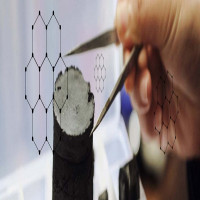Allure of Clay Brown Pigments

Strong 8k brings an ultra-HD IPTV experience to your living room and your pocket.
Clay brown pigments, often referred to as natural earth pigments, have been integral to human artistic and industrial endeavors for millennia. These pigments, derived from naturally occurring iron oxide, present a range of earthy hues from light tan to deep brown. Their enduring popularity can be attributed to their availability, non-toxicity, stability, and versatility.
Historical Significance
The use of clay brown pigments dates back to prehistoric times. Early humans utilized these pigments for cave paintings, body art, and pottery decoration. The famous Lascaux Cave paintings in France created around 17000 years ago, prominently feature brown hues derived from iron oxide. Throughout history, civilizations such as the Egyptians, Greeks, and Romans harnessed these pigments for murals, frescoes, and ceramics. Their durability and natural origins made them a preferred choice for artisans and craftsmen.
Sources and Composition
Clay brown pigments are primarily sourced from natural deposits of iron oxide minerals, such as hematite and limonite. These minerals are often found in sedimentary rock formations and can be extracted through mining or surface collection. The primary components of clay brown pigments include:
Hematite (Fe2O3): This iron oxide mineral imparts a rich, reddish-brown color.
Limonite (FeO(OH)·nH2O): A hydrated iron oxide, limonite produces a range of yellowish-brown to dark brown shades.
Goethite (FeO(OH)): Another iron oxide mineral, goethite contributes to the yellow and brown spectrum of the pigment.
Properties and Characteristics
Clay brown pigments are renowned for their excellent covering power and opacity. Their fine particle size ensures smooth application and uniform color distribution. Additionally, these pigments are chemically stable, lightfast, and resistant to environmental degradation, making them suitable for both indoor and outdoor applications.
Key characteristics of clay brown pigments include:
Non-Toxicity: Being derived from natural minerals, these pigments are free from harmful chemicals, making them safe for use in a variety of applications.
Color Stability: The natural iron oxide composition ensures that the colors remain vibrant and do not fade over time, even when exposed to sunlight.
Versatility: Clay brown pigments can be used in various mediums, including paints, coatings, ceramics, and plastics.
Applications
The versatility of clay brown pigments allows them to be used in numerous industries, each benefiting from their unique properties:
Art and Design
Artists and designers value clay brown pigments for their rich, earthy tones. These pigments are used in oil paints, watercolors, acrylics, and pastels to create landscapes, portraits, and abstract works. Their stability ensures that artworks retain their original appearance for centuries.
Construction and Architecture
In the construction industry, clay brown pigments are added to concrete, stucco, and mortar to achieve natural, aesthetically pleasing finishes. They are also used in the production of bricks, tiles, and decorative stones.
Ceramics and Pottery
Potters and ceramicists utilize clay brown pigments to enhance the visual appeal of their creations. The pigments can be mixed with clay bodies or applied as surface glazes to achieve a range of effects, from rustic to refined.
Plastics and Polymers
In the manufacturing sector, clay brown pigments are incorporated into plastics and polymers to produce colored products that are durable and UV-resistant. These pigments are often used in outdoor furniture, automotive parts, and consumer goods.
Cosmetics
The non-toxic nature of clay brown pigments makes them suitable for use in cosmetics, such as eyeshadows, bronzers, and foundations. Their natural tones provide a warm, earthy look that complements a variety of skin tones.
Clay brown pigments continue to be a vital component in various industries, from art and design to construction and manufacturing. Their rich history, coupled with their exceptional properties and versatility, underscores their enduring value. As we advance in technology and innovation, the use of natural pigments like clay brown will likely remain a cornerstone of sustainable and aesthetically pleasing practices.
By appreciating the origins and applications of clay brown pigments, we can better understand their significance and continue to harness their potential in creative and industrial endeavors.
Note: IndiBlogHub features both user-submitted and editorial content. We do not verify third-party contributions. Read our Disclaimer and Privacy Policyfor details.


